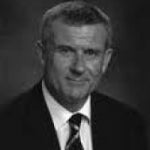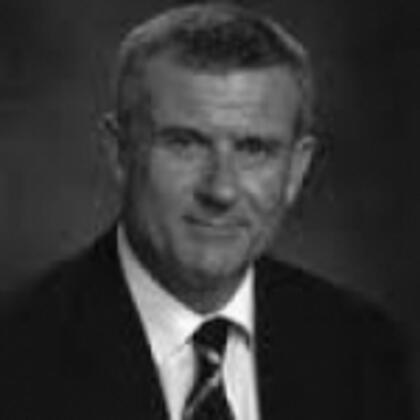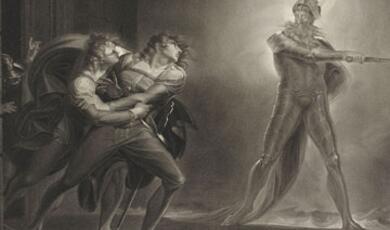Percy Grainger: Australia's greatest composer?
Share
- Details
- Text
- Audio
- Downloads
- Extra Reading
We can think of world-leading Australians in sport (Don Bradman), media ownership (Rupert Murdoch) and film (Nicole Kidman). In music, some great performers come to mind, especially female singers (Nellie Melba, Joan Sutherland). But how many people can even name an Australian composer? In his Gresham Lecture, Malcolm Gillies probes this elusive category of greatness. Percy Grainger (1882-1961), the composer of Country Gardens, is often mentioned as a contender. But, despite his birth, was he really Australian, was he primarily a composer, and what was so great about him, anyway?
Download Text
Monday 11 July 2011
Percy Grainger: Australia's Greatest Composer?
Malcolm Gillies
Early in the year I was invited to give this Gresham Lecture, as part of the 2011 City of London Festival, with its strong accent on Australian and New Zealand music. I hurriedly penned the abstract:
We can think of world-leading Australians in sport (Don Bradman), media ownership (Rupert Murdoch) and film (Nicole Kidman). In music, some great performers come to mind, especially female singers (Nellie Melba, Joan Sutherland). But how many people can even name an Australian composer? In his Gresham Lecture, Malcolm Gillies probes this elusive category of greatness. Percy Grainger (1882-1961), the composer of Country Gardens, is often mentioned as a contender. But, despite his birth, was he really Australian, was he primarily a composer, and what was so great about him, anyway?
If I had been writing that abstract today, I might have begun like this: "It is hard to avoid world-leading Australians: in media ownership (Rupert Murdoch), in media ownership (James Murdoch) and in media ownership (Rebekah Brooks)" – who seems over the last one hundred hours to have gained the pariah status of an "honorary Australian". Mind you, the Australian press during these days – at least the bit that is not owned by the Murdochs – is stressing very heavily that Rupert Murdoch actually now carries an American passport, and that his son (born in Wimbledon) has been corrupted by "the speak of the North American business school".
National generalisations about character abound. Can I just mention two names to make my point: Strauss-Kahn and Berlusconi? As people like Rupert help to turn our world into a truly global, 24/7 village, these character generalisations seem only to intensify. In her Cathedrals of the Flesh of 2003, Alexia Brue probed the attributes of a modern European she found sitting next to herself on a plane. She commented: "He combines the moral courage of the French, the fighting spirit of the Italians, the work ethic of the British, and the sense of humour of the Germans. In short, [he turned out to be] a Belgian. [London: Bloomsbury, 2003, p. 171]
Australians, on the other hand, currently appear to have none of these European deficiencies. Indeed, the nation was founded – or, if you prefer, invaded – by those in flight from these European qualities, or who were even compulsorily exported from these shores. A recent Special Report on Australia by The Economist magazine [28 May 2011] was pithily entitled "No worries?", and concluded:
That Australia is successful is not in doubt. It has a prospering economy, a harmonious and egalitarian society, an ability to accommodate immigrants, an excellent civil service, an independent central bank, a good balance of personal freedom and limited government, sensible pension arrangements, sporting prowess and a fine cuisine. [p. 19]
But after this long eulogistic advertorial, The Economist dares to comment that the current "lot" of Australian politicians "couldn't pull the skin off a rice pudding". And amid this thoroughly up-beat, twenty-page analysis of Australia's current circumstance, something is missing: the Arts don't get a mention. Wine yes, sport yes, minerals yes, money lots of yes, the environment yes, sheep yes, even vegemite. The arts, no. Even though an Aboriginal dot-painted boomerang appears on the opening page, there are no words about it – it is just a graphic – although there are some buried lines later on about the Aborigines and their continuing plight.
Why is it that we can think of Australian sportsmen -- and if you have forgotten about the long-dead Don Bradman, well then you probably recall the cricket-and-texting hero Shane Warne, or that brace of Rod Laver, Roy Emerson and John Newcombe that won virtually every Wimbledon male final between 1960 and 1970? And can think of film stars (Nicole Kidman, Cate Blanchett, Mel Gibson), or perhaps you'd prefer to think of social activists such as Germaine Greer or Geoffrey Robertson?
But then look at the people featured on the plastic notes of the Australian currency – now, by the way, the fifth most traded currency in the world – and you see a different Australia: Dame Mary Gilmore (poet and journalist), David Unaipon (Aboriginal writer and inventor, and journalist), Banjo Patterson (poet and journalist), and Dame Nellie Melba (singer) – and journalist? No, sorry, she wasn't a journalist, just a singer! Four out of the nine featured personalities on the currency notes have artistic or literary claims to fame.
Who, by the way, were the other five on the currency? Well, on the A$100 note, General Sir John Monash; on the A$50, Edith Cowan, Australia's first female parliamentarian, at A$10 both Flying Doctor, John Flynn, and Mary Reibey, a convict-turned shipping magnate-turned philanthropist. And, also, a snitch as A$5: Her Majesty the Queen. (This balance of five women to four men would not be found in too many other countries, I'm sure.) But note that there's not a sportsperson in sight!
Out of these nine, the one you have probably heard of – other than the Queen, of course – is Nellie Melba, which reminds us that Australians have been prominent as musical performers – think also of the late Sir Charles Mackerras – but particularly prominent are female singers. Let's not forget the recently departed, Joan Sutherland, or the indefatigable Kylie Minogue.
But what of composers? As with Sweden, Switzerland, or Canada, it is hard for many music lovers immediately to name an Australian composer. (I once tried this out an a conference of the International Musicological Society: a group of people with very wide and deep knowledge of music. After much feet-shuffling and hesitation, the name "Percy Grainger" emerged, but – like Rupert Murdoch – the comment immediately followed: Wasn't he really American? Or, like Nellie Melba, he didn't actually live there, did he?)
So, who was Percy Grainger? Was he Australian? Was he any good as a composer? Was he really "great"? Indeed, has Australia ever even had a "greatest" composer? By coming here today, there is some evidence to suggest that you already know something about Grainger or his music. But let me give you a micro-summary. You could call it a Grainger tweet:
Composer and pianist, born Melbourne 1882, died New York 1961. Trained Frankfurt, early career London, maturity New York. Zenith as pianist 1910s, as composer early 1920s. Greatest hit: Country Gardens (1919). Most monumental work: The Warriors (1916), an imaginary ballet. (Best work? Lincolnshire Posy (1935), for band.) Compositions are folksong settings, original compositions, or experimental works. Quote: "I hardly ever think of ought else but sex, race, athletics, speech and art." (1911) And in that order!
SOUND EXAMPLE 1: Country Gardens, played by Grainger himself at piano, 7 June 1918 (Appian Publications 5024709175017, for Columbia Graphophone Company, US). This recording was not commercially released. It shows Grainger trying out the work before its final form was concluded – and not in the least worried about the odd collision or fistfuls of wrong notes. 2' 10".
This Grainger, largely home-educated by his mother, aspired to be a polymath, with views on almost all topics of his day, including many entirely beyond his technical grasp. His views were often considered unconventional in his day, although not necessarily in ours. For instance:
He did not normally wear a hat (reason: it's bad for your hair) He wore his hair long (reason: it keeps you warm) He ran rather than walked, even in "polite" circumstances, for instance, coming onto or off stage – even in the middle of a concerto . . . (reason: it's good for you, cuts you a profile as "The Running Pianist", and, well, why not?) He carried his own suitcases and shopping (reason: it strengthens the hands, important for a pianist) He exposed himself naked to the sun and to cold winter air (reason: good for the health, keeps infections at bay) He was for much of his life a vegetarian (reason: it stops you having colds, and it makes people respect all life more) He invented his own special language – Nordic (or Blue-eyed) English – in which words of Latin or Greek origin are absent (reason: it restores to the English language its – as he imagined – pre-1066 Anglo-Saxon purity). So, he talked about keyboard "swinking" for piano practising; and referred to the telephone as a "Thor-juice talker" He invented various contraptions, such as the music roller (so that the pianist did not need to turn the pages), and some say, the bra (in 1908, some six years before it was patented in the United States).Grainger even once speculated that this very diversity of his activity and his thoughts was just as important as his more circumscribed musical life, writing in 1917: "My music expresses only certain sides, in any event, and I almost think that my emotional life and the life of my thoughts have more to say than my artistic life, and will, in the future, be regarded as being of the same, or greater, significance" [quoted in "Grainger", The New Grove Dictionary]. Put another way, we could say that Grainger's aspiration to a broader plane of all-roundedness, deflected him from the singular concentration that characterises so many of the greatest composers or performers. Perhaps he was eventually defeated by the very multiplicity of his talents, because he failed to channel any one of them sufficiently productively, or to tie them together to achieve something altogether greater than the sum of their parts?
Most of the Grainger that we are hearing in the City of London Festival – and, my goodness, there is a lot of it – is relatively short pieces, most lasting between one and six minutes, and most in a direct folk, or a pseudo-folk, style: Australian Up-Country Song, with the BBC Singers, last Friday week; My Robin is to the Greenwood Gone, with the Nash Ensemble last Monday, or the jaunty Handel in the Strand.
Then there are Piers Lane's performances of Grainger's fantastic piano transcriptions, including his Straussian Ramble on Love and Blithe Bells, his setting of Bach's "Sheep may safely graze"; and some little performed Grainger arrangements of medieval music: Alleluia psallat or Beata viscera, performed last week by the recorders-and-saxophones ensembles of the Guildhall School concerts in St Andrew-by-the-Wardrobe. Here is another from that set of works which Grainger arranged from the late medieval and early renaissance period.
SOUND EXAMPLE 2: La Bernardina, a chanson by Josquin (1450/55 – 1521), here arranged for wind orchestra, performed by the Royal Northern College of Music Wind Orchestra, conducted by Clark Rundell. Chandos, Grainger: Transcriptions for Wind Orchestra, no. 10455. 1' 16".
These various works, whether originals or arrangements, did give Grainger a considerable, mainly American-driven, wave of popularity. In the late 1910s and early 1920s he was one of the most highly rated "Steinway artists", and two New York critics were prompted to observe in 1917:
There is no figure in contemporary music more picturesque and prolific, none so elusive, perplexing, inconsistent. A raw, uncouth physique glorified by some mysterious kind of inner radiance, a delegated spokesman for young lands and new peoples . . . a pagan Peter Pan practical upon occasions as any plumber. [Buchanan and Brower, 1917]
Now greatness refers to something more pushing of the boundaries, more inventive of new paradigms: something more avant-garde, free-wheeling, hinting of genius, even eccentricity. For a music dictionary about the avant-garde, I found myself writing this a few years ago.
Grainger's greatest avant-garde contribution . . . lay in his lifelong search for a music free from the snobbish divisions of current musical classifications and full of soaring, floating sonorities, in contrast to the rigid angularities of pitch and rhythm found in most existing music. Some of the key inspirations to this quest were the malleability of nature itself, the muscular freedom of the poetry of Walt Whitman, Grieg's "nature voices", the glissandi found in the music of Cyril Scott and such jazz artists as Duke Ellington, the microtones of American composer Arthur Fickénscher, the riotous rhythms of Maori hakas and the joyous polyphony of Rarotongan singing. He saw parallel developments to his conception of a "free music" in the work of Freud and Einstein, the growing passions of his day for flying and speed, and the replacement of faith in a beneficent deity with "the fearless all-embracingness of science". In 1938 he commented that the art of music had not yet grown up, and likened its contemporary condition to Egyptian bas-reliefs, in which only regularized shapes are found, as against the condition of "free music", which for him paralleled Greek sculptures where "all aspects and attitudes of the human body could be shown in arrested movement". [Music of the Twentieth-Century Avant-Garde: A Biocritical Sourcebook, ed. Larry Sitsky, Westport, Conn.: Greenwood Press, 2002, p. 178]
You can see from this paragraph that Grainger's ideas about music went far beyond the glossy, sometimes twee, settings of folk songs like his renowned Oh, Danny Boy setting. There was something deeper: a craving for the flexibility that electronic music now allows. But he was born just half a century before his time!
An early stimulus to Grainger's ideal of tonal freedom was the wave movements which he observed in the sea near Melbourne and in its Albert Park Lake, during the late 1880s and early 1890s. His inclination for rhythmic freedoms was heightened in the late 1890s by his analysis of speech rhythms of passages from the Old Testament, leading to the irregular rhythms of his Love Verses from "The Song of Solomon", sketched in 1899-1900, which were furthered in Hillsong No. 1 (1901-2). And the multiplicity of rhythms generated by a lurching Italian train in 1900 provided the impetus for his Train Music (1901), written when Grainger was just eighteen.
SOUND EXAMPLE 3: Train Music, in a version by Eldon Rathburn for standard symphonic ensemble. City of Birmingham Symphony Orchestra, conducted by Simon Rattle. Grainger started this work in 1900, but never completed scoring it. He had intended it for an ensemble of 150 players. EMI Classics, Percy Grainger: In a Nutshell, no. 556412-2. 1' 35".
By the time Grainger was twenty, when he wrote his essay "My Musical Outlook", he knew what had to be done: "to clear away all structural & formal limitations -- regularity of bars, beats & phrases, themes, motives, sections – barring the way to the realization of my style-ideals". [Quoted in Grainger on Music, ed. Gillies & Clunies Ross, p. 17] Grainger believed in music as "an expression of emotion" – in his music, his emotion – and so he rejected the artificial contrasts of themes and keys which superficially structured most classical or romantic music.
But how was this to be done? What Grainger wanted, above all, was consistency of texture, even if it risked become blandly uniform. In a letter to the Scottish critic, D.C. Parker, in 1916, he elaborated his distinctive view of texture.
It always seems to me that the ‘texture’ . . . of a composer is the determining factor of his work. . . . ‘What is the texture?’ ‘Is it sodden texture like linoleum, or a bright hard-shell texture like Chinese porcelain, is it transparent texture like Bach, Debussy and Chopin, or muddy texture . . .? [Quoted in The All-Round Man, ed. Grainger & Pear, pp. 32-33]
So what exactly was Grainger's definition of texture? In the same letter he explained it like this – and we'll get a bit technical just for a moment. Texture is “the actual distribution of notes in chords, the critical or unconscious choice of inversions – whether they are close or spread; in short the weft of the fabric, the actual stuff (sonority) produced by the polyphony or by a ‘chordy’ style of writing”. What's more, continued:
For me the question [is] "How does such a chord, such a passage tickle, or grate upon, or smooth out my ear when I listen? How do the ant-like armies of polyphonous parts move as they go about their business? Can one trace their paths, or are their movements hid in fog? Do their movements jostle and rub and irritate one another (I love my parts to jostle and rub and irritate) or do theyglow together (like glorious passages in Wagner and Brahms)?”
In short, to Grainger: “Fine, personal texture never ages".
Here now is my favourite example of a Grainger folk-song setting that is very imaginative indeed, and illustrates Grainger's own "fine, personal texture" at its very best. The original tune, "Rufford Park Poachers", was a complex one – both in its music and its text – about the poaching of game on a private reserve. Grainger has turned it into a weird work in which the sense of beat and key are often broken down, in his search for "free music". Listen for the ending passage, which almost sounds deranged. And listen for the masterly way in which Grainger could write for the wind band. (After all, he had spent one-and-a-half years of his life in US Army bands.)
SOUND EXAMPLE 4: "Rufford Park Poachers", from Lincolnshire Posy ( 1937). Royal Northern College of Music Wind Orchestra, conducted by Timothy Reynish. Chandos, Grainger: Works for Wind Orchestra, no. 9549. 3' 47"
Grainger was driven by a democratic aim in music. He developed the concept of "elastic scoring" in the 1920s, so that music could be played whatever the available instrumental resources. That is, the connection of a particular part with a particular instrument was sacrificed to a more flexible concept of tonal balance. So, almost all available instruments could be used, provided players were assigned their parts with an ear to the blending characteristics of their instruments. But this democratised music was, as Grainger explained in 1931, "only a halfway house on the road to 'free music' – music in which all intervals, rhythms, harmonies and forms will be free, irregular, unlimited & non-conventional. Then only will the full soul of man find universal, untrammelled musical speech." [Quoted in Grainger on Music, ed. Gillies and Clunies Ross, p. 222] Just what he had hankered after back in 1902! Hence, in early 1935, Grainger launched his Free Music No. 1, one of the earliest examples of "gliding" music. It was scored for string quartet, but he believed his "free music" really demanded non-human performance, so that the composer could speak to his public directly, without the intervening "tyranny of the performer". Free Music No. 1 and a sequel, Free Music No. 2 (c. 1937) were then scored for ensembles of theremins, early electronic instruments with variable volume and timbre which emitted a single frequency determined by the distance of the performer's hand was from an antenna – a "Doctor Who" kind of sound!
SOUND EXAMPLE 5: Free Music No. 1 (1935), for String Quartet. Members of the Academy of St Martin in the Fields' Chamber Ensemble. Chandos, Grainger: Works for Chamber Ensemble 2, no. 9819. 1' 57".
Grainger continued with his "Free Music" experiments. More sophisticated machines were developed, in collaboration with the New York physicist Burnett Cross: the "Estey reed Tone-tool [machine]" (1950-1), the "Kangaroo-pouch Tone-tool" (1952) and finally the "Electric-eye Tone-tool", which was still incomplete at his death. Its photocells "read" the changing amount of light admitted to a slit by the "hills and dales" of Grainger's graphs, and, turned this information into sound emitted from loudspeakers. But by the mid-1950s Grainger had come to realize that instruments such as the electronic synthesizer, developed at RCA's Princeton laboratories, were able to achieve many of his aims much more elegantly. In fact, Grainger – the frustrated genius – never managed to write a major piece of "free music", but rejoiced to live to see the "freeing up" of music. In old age he still held to his youthful aim: "I strive to tally the irregularity, the formlessness & the unforeknowableness of nature, as it is revealed to us". [Quoted in Grainger on Music, ed. Gillies & Clunies Ross, p. 375]
So, back to our topic: Was Percy Grainger Australia's greatest composer?
Was he a composer? Well, yes, and a lot more besides. With some four hundred compositions to his credit, as well as some three thousand concert performances, many involving his own works, he would be hard to knock out on that score.
Was he great, and specifically as a composer? He certainly was popular in his day, but his folksong arrangements alone would not conclusively make the case. His original works strengthen the case, but it still isn't quite sufficient. To my mind what pushes him into the "truly great" category was his conception of this "irregular, formless and unforeknowable nature music", even if he did not live to see it be widely recognised.
Next, was he Australian? Technically, not. In 1882, when he was born, Australia didn't exist. So, he was born as a British subject, resident in the self-governing colony of Victoria. Those self-governing colonies federated in 1901, creating Australia, by which time Grainger had already gone as a student to Germany. And he only returned to Australia twice before, in 1918, becoming an American citizen, and hence relinquishing all other citizenships. But he always considered himself Australian. Like most Australian artists to this day, however, expatriatism was virtually a necessity if you were to achieve any kind of international success.
There is a delightful moment in the film about Grainger called Passion, which came out in 1999 [www.magnapacific.com.au]. The fictionalised Grainger says of Australia that it is "a place where civilization seems a walloping waste of time". His fictionalised mother is even more direct: "Australia – the best place on earth; the problem is that you can't live there."
From Stephen Alomes' book of 1999, When London Calls: The Expatriation of Australian Creative Artists to Britain, you would even gain the not-incorrect impression that London was actually the hub of professional musical life both for Australia and New Zealand well into the 1960s. If you were good enough, you took the boat to London to test your talent. And if you were good enough, you stayed there. If you went home, you had obviously failed. Where Grainger was different was that, driven by the outbreak of the First World War, he sidestepped to North America, as also did, somewhat later, his younger Australian contemporaries Arthur Benjamin and Peggy Glanville-Hicks. And there, in America, he stayed and died, just weeks after J.F. Kennedy's inauguration.
So, now we have the integrated proposition: Was Percy Grainger Australia's greatest composer?
If we are prepared to admit that no Australian composer comes close to any list of the top one hundred composers globally, or even the top one hundred twentieth-century composers, or even the top one hundred living composers – which does seem to be true – then Grainger's case is as good as any Australian's.
The evidence of this year's City of London Festival, with its strong Australian and New Zealand accent, also strengthens the case. Out of twenty-one Australian composers represented in the Festival's programmes, Grainger scores the greatest playing time by far, including one half programme and two whole programmes. (I do hope you will come to the performance of Grainger's Random Round this Friday, by the Elision Ensemble, at 6.00pm, and the two-piano Grainger recital at Two Temple Place at 7.30pm, where you can also view a special exhibition about Grainger.)
But who else is there in the aspiringly "greatest" Australian camp? Age does seem to wear them, nor the years condemn, for after the fifteen concert segments in this Festival's programme to Grainger, born in the 1880s, you have nine to Peter Sculthorpe, born in the 1920s, and then we move towards the youngsters with six to Brett Dean, born in the 1960s. And after that four others cluster: Carl Vine, with four, and Matthew Hindson, Elena Kats-Chernin and David Lumsdaine with three each. (Interestingly nearly all the Australians featured in the Festival are still alive!)
Now, this Festival survey is a very inexact science, and this year's result is undoubtedly skewed by another factor: 2011 is the fiftieth anniversary of Grainger's death, hence Grainger is gaining an extra promotion.
You could also look at other indicators of greatness or esteem, such as density of scholarly books and articles or frequency of radio broadcasts, but there, too, Grainger holds up nicely against all, or most, comers.
So, is Percy Grainger Australia's greatest composer? I think he is – and one of America's and Britain's more accomplished ones, as well. And what's more, many would see him also in the top one hundred of the last century's pianists. A truly talented man! I now look forward now to learning about your views.
©Malcolm Gillies, Gresham College 2011
Part of:
This event was on Mon, 11 Jul 2011
Support Gresham
Gresham College has offered an outstanding education to the public free of charge for over 400 years. Today, Gresham College plays an important role in fostering a love of learning and a greater understanding of ourselves and the world around us. Your donation will help to widen our reach and to broaden our audience, allowing more people to benefit from a high-quality education from some of the brightest minds.


 Login
Login







